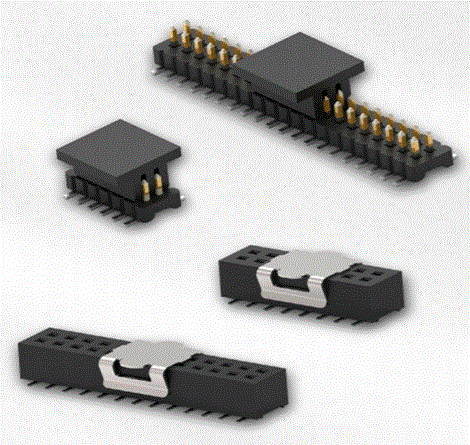Manufacturers
- Abracon
- Adam Tech
- Aerospace, Defense & Marine
- Agastat
- AIC
- AKM Semiconductor
- Alcoswitch
- Allegro
- Alps Electric
- Altera
- AMI Semiconductor
- AMP
- ams
- Analog Devices (ADI)
- Aptina Imaging
- Atmel
- Avago / Broadcom
- AVX
- Axicom
- Bccomponents
- Beyschlag
- BI Technologies
- Bourns Inc.
- Bowei Integrated Circuits
- Bridgelux
- Buchanan
- California Micro Devices
- Catalyst Semiconductor
- CGS
- Cirrus Logic
- Citizen Electronics
- CML Microcircuits
- Coiltronics
- Cooper Bussmann
- Corcom
- Core Logic
- Cree
- CSR PLC
- CTS
- Cypress Semiconductor
- Dale
- Data Image
- Deutsch
- Diodes Incorporated
- DOMINANT Opto Technologies
- E-T-A
- Eaton
- ECS
- Edison Opto
- Elcon
- EPCOS
- Epistar
- Epson
- Everlight Electronics
- Exar
- Fairchild Semiconductor
- FCI
- Freescale Semiconductor
- Fremont Micro Devices (FMD)
- Fujitsu Semiconductor
- Fulltech Electric
- General Semiconductor
- Harvatek
- Holsworthy
- Hsuan Mao Technology
- IDT
- Infineon Technologies
- Innolux
- International Rectifier (IR)
- Intersil
- IRC
- ISSI
- IXYS-IC
- Jing Cheng Electronical
- JL World
- Johanson Dielectrics
- Johanson Technology
- JRC / NJR
- JST
- KEC
- Kilovac
- Kingbright
- Kyocera Industrial Ceramics
- LEDiL
- Linear Technology / ADI
- Lite-On Technology
- Littelfuse
- Lumex
- Lumileds
- Luminary Micro
- Luminus Devices
- Macronix
- Maojwei / ZJPT
- Maxim Integrated
- MCC
- Mean Well Enterprises
- Microchip Technology
- Micron
- Microsemi
- Mini-Circuits
- Molex
- Murata Manufacturing
- Murata Power Solutions
- MWT
- National Semiconductor
- Nichicon
- Nippon Chemi-Con
- NJR / JRC
- NVE
- NXP Semiconductors
- OEG
- Omnivision
- ON Semiconductor
- Optek Technology
- Optrex
- OSRAM Opto Semiconductors
- OTAX
- Panasonic
- Peregrine(pSemi)
- Potter & Brumfield
- Power Integrations
- PowerStor
- Preci-Dip
- Prewell
- Products Unlimited
- Pulse Electronics
- PulseCore Semiconductor
- Qorvo
- Raychem
- Renesas Electronics
- RFMD
- Richtek Technology
- ROHM Semiconductor
- Rubycon
- Samsung Electro-Mechanics
- Samsung Semiconductor
- Schaffner
- Schrack
- Seiko Instruments, Inc. (SII)
- Semtech
- Sensata
- Seoul Semiconductor
- Sfernice
- Sharp Display
- Sharp Microelectronics
- Silicon Labs
- Siliconix
- Skyworks Solutions
- SoniCrest / JL World
- Spansion
- Sprague
- Stanley Electric
- STMicroelectronics
- Sunny Electronics
- Susumu (SSM)
- Taimag
- Taiyo Yuden
- TDK
- TDK-Lambda
- TE Connectivity
- Teccor
- Texas Instruments (TI)
- Thin Film
- Tianma Micro-electronics
- TOCOS
- TOKO
- Toshiba Electronic Components
- TT Electronics
- Tusonix
- TXC
- Tyntek
- Vishay
- Vishay Precision Group
- Vitramon
- Walsin Technology
- Weidmuller
- Welwyn
- Wickmann
- Winbond
- Xilinx
- Yageo
- Zetex Semiconductors
- ZJPT / Maojwei
News
Featured Product: AMPMODU 1.0 mm Centerline
2021-08-25 | Return TE Connectivity responds to growing demand for miniaturized components with new connector product line
TE Connectivity responds to growing demand for miniaturized components with new connector product lineAMPMODU Small Centerline occupies 85% less area than traditional components with 1 mm pitch.
TE Connectivity (TE), a world leader in connectivity and sensors, is extending its range of AMPMODU interconnection solutions with the introduction of the AMPMODU Small Centerline product line to address the growing demand for miniaturized components.
AMPMODU Small Centerline connectors have a 1 mm (0.039”) pitch, occupying 85% less area than traditional 2.54 mm (0.100”) centerline products. The new connectors from TE are suitable for high-density systems with target applications including PLCs and other I/O devices, servo drives, robotics, instrumentation and test equipment, industrial controls, and building and home automation devices.
“We are excited to be able to extend our AMPMODU portfolio to now include the Small Centerline 1 mm product family,” says Jana New, product manager for TE’s board signal products. “This portfolio expansion supports the trend in our industry of board miniaturization while continuing to meet the high reliability and quality standards that our customers expect from TE.”
Big reliability in a small package
The AMPMODU Small Centerline family of board-to-board headers and receptacles utilize copper alloy contacts with dual cantilever beams, which mate on the milled side, ensuring reliable signal transfer even in severe shock and vibration environments. Housed in a high-temperature liquid crystal polymer (LCP), they’re suitable for automated reflow soldering at temperatures up to 260°C (500°F) and they have an operating temperature range of -55 to 125°C (-67 to 257°F).
The surface-mount product has a current rating of 1A at an operating voltage of 30V and is available with 10 to 100 positions (double row, vertical orientation) packaged in tubes with pick-and-place caps. Customers can select 30 µ” (0.76 micron) gold or gold flash (5 µ” / 0.1 micron gold) plating depending on their application and cost requirements.
Source: http://www.te.com/





